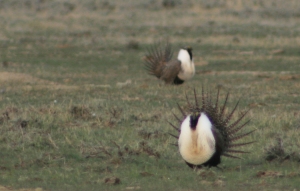FWP Bison Discussion Group Meeting Held in Billings
 By Jay Bodner, MSGA Director of Natural Resources
By Jay Bodner, MSGA Director of Natural Resources
MSGA attended and participated in the latest Bison Discussion Group, convened by MT Fish, Wildlife & Parks. The meeting was held in July 14-15 in Billings, MT. The discussion group included various interests such as agriculture, sportsmen, bison advocates and legislators. This was the second meeting held by MT Fish, Wildlife & Parks to discuss the development of an Environmental Impact Study (EIS) that would consider a range of alternatives to bison reintroduction.
The first day of the meeting included a public comment period, where ranchers were well represented and made it very clear there would be no support for free roaming bison in MT. In addition, there were also concerns over containment, meeting population objectives, displacement of grazing, range conditions and the significant funding that would be required.
The group was then divided into smaller groups to help develop a list of possible alternatives that would be further evaluated by FWP as it develops the EIS. The alternatives consisted of a: tribal/state partnership, private/public partnership, placement on federal lands and a no action alternative that continue current bison management activities. While many of these alternatives have been discussed, one alternative discussed the formation of a “citizen management committee” that would have actual authority to make management decisions. This type of committee would most likely require legislation action.
The final task of the group members was to consider what type of funding options might be available. Many of the members discussed the challenges with adequate long and short term funding and also the funding requirement in state law (SB 212).
At the conclusion, Mike Volesky, Chief of Staff for FWP, stated the Department would take the materials developed by the group and continue working on the EIS. He stated the schedule of the EIS would be to develop a comprehensive plan by the fall or winter, hold a 90-day comment period and finalize the document by next spring. The group discussed the possibility of meeting again to review the draft document, but no decisions were finalized.
MSGA will continue to update members on this important topic and would like to thank those members that participated in the discussion and those that traveled to attend and provide public comments. Provide your feedback on the Bison Management Plans to the Stockgrowers Association and join us during the Policy Committee Meetings at Annual Convention in December. Email [email protected] or call (406) 442-3420.













Comments Needed on New State Land Access Program Rule
The Montana Fish & Wildlife Commission is seeking comment on a proposed rule that would offer tax incentives to private landowners who provide public access to state lands.
The proposed rule is in response to a new law that established the Unlocking State Lands Program. Under the program, landowners can receive a $500 tax credit by providing public access to a parcel of state land through contractual agreements with Montana Fish, Wildlife & Parks. A tax credit would be offered for each qualified access point, with a limit of $2,000 per year, per landowner.
The law requires the commission to adopt administrative rules for establishing contracts that address duration of access, types of qualified access, and reasonable landowner-imposed restrictions.
The law becomes effective Jan. 1, 2014 and terminates Dec. 31, 2018.
Public comment on the draft rule will be accepted through, Dec. 27. Copies of the draft rule and comment forms are available online at fwp.mt.gov, click “Public Notices“. E-mail comments to [email protected]; or mail to Alan Charles, Montana Fish, Wildlife & Parks, P.O. Box 200701, Helena, MT 59620-0701.